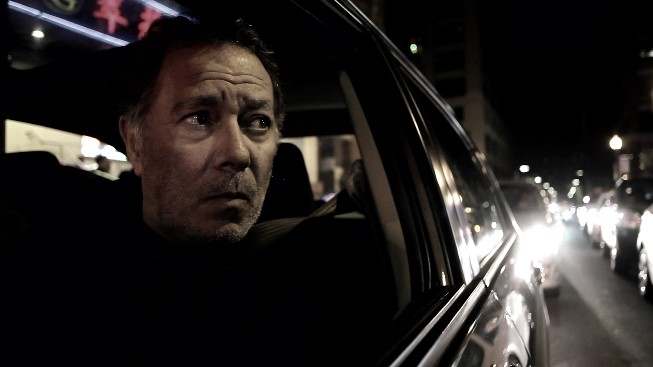Omnibuses on a schedule
Here’s something I never realized before. Three-part feature film anthologies are like buses. You can go for ages without seeing one, then two show up nearly simultaneously.
An anthology, in its original meaning, is a collection of various works of art, e.g. musical compositions or writings. In the golden age of television the term denoted a series that featured a completely different story with different characters each week, as opposed to following the same cast of characters each week, as was more typical. In movies, the term has usually referred to a feature film that is divided into segments, each with an independent story separate from the other segments. Generally, each segment is a mini or short film, complete with its own director, writer(s) and actors—although sometimes all segments are directed by a single filmmaker. Sometimes these sorts of movies have the term omnibus or portmanteau attached to them.
For whatever reason, the film portmanteau seems to be particularly prominent in the horror genre. There are quite a few examples of grand guignol anthologies out there over the years, but two of the more notable that come to my mind are George Romero’s Creepshow and 1983’s Twilight Zone: The Movie, which consisted of remakes of classic episodes of the TV series directed by Joe Dante, John Landis, George Miller and Steve Spielberg. Sometimes the idea is to celebrate a particular city, as in New York Stories (Woody Allen, Francis Ford Coppola, Martin Scorsese) or the international series that includes New York, I Love You and Paris, je t’aime (featuring the contributions of no fewer than 11 and 22 different filmmakers, respectively). Sometimes the common thread is a particular author, as in O. Henry’s Full House (of which the five directors included Hathaway and Hawks) and Spirits of the Dead (Fellini, Malle and Vadim do Edgar Allan Poe).
Sometimes the omnibus pieces are linked by following a common object, such as the titular car in The Yellow Rolls-Royce, the musical instrument in The Red Violin (directed by Anthony Asquith and François Girard, respectively) and a train in Tickets (Abbas Kiarostami, Ken Loach, Ermanno Olmi). Sometimes the link is as general as the titular java and smokes in Jim Jarmusch’s Coffee and Cigarettes. Sometimes the link is a common theme, such as music in Aria (Altman, Godard, Jarman, Roeg and others) and love and sex in Eros (Antonioni, Soderbergh and Kar-wai Wong).
While I can clearly cite plenty of examples of this form, such films are still rare compared to the standard feature-length single narrative. So it was a bit of surprise over the long New Year’s weekend when two portmanteaus were tossed over my transom, literally within mere hours of each other. (And, yes, my habitual reference to the transom is an affectation. My working place has no transom and, in fact, I cannot remember having actually seen a transom in years. But the idea of it enchants me.)
The two invitations to view were clearly not coordinated. One came from the Massachusetts, the other from Ireland. Each was directed by a single filmmaker, and each consisted of three segments that bleeded into one another narratively and got tied up at the end. What are the odds?
The genres were different. Christopher Di Nunzio’s A Life Not to Follow was a gangster movie that dealt with themes of atonement, betrayal and settling scores. Featuring strong acting and cinematography, the film managed to be naturalistic and melodramatic at the same time. It generates a fair amount of suspense and emotional involvement.

David Graziano in A Life Not to Follow
I had been alerted by Donegal’s Gerard Lough more than two years previously to expect Night People. He had teased it as “a horror/science fiction anthology film,” and that is by no means inaccurate. But if sci-fi makes you think space ships and horror makes you think monster or madman with an axe, then your expectatins would need adjusting. Night People is largely about mood and atmosphere and how our own natures, in the wee late hours, sometimes lead us quietly down a disastrous path.

Claire Blennerhassett in Night People
I can heartily recommend both of these fine movies. In recent months A Life Not to Follow has been screened at film festivals in Georgia, California, Massachusetts and Chicago. Night People played at the Irish Film Institute’s Horrorthon film festival in Dublin in October and had a limited release in Ireland in November. Gerard tells me that it will be available via video-on-demand sometime this year.
If you get the chance to see either or both, definitely check them out.
-S.L., 12 January 2016
If you would like to respond to this commentary or to anything else on this web site, please send a message to feedback@scottsmovies.com. Messages sent to this address will be considered for publishing on the Feedback Page without attribution. (That means your name, email address or anything else that might identify you won’t be included.) Messages published will be at my discretion and subject to editing. But I promise not to leave something out just because it’s unflattering.
If you would like to send me a message but not have it considered for publishing, you can send it to scott@scottsmovies.com.














